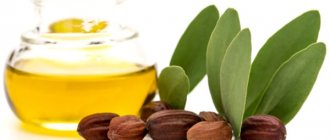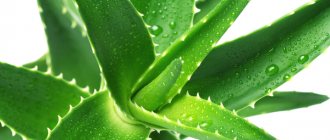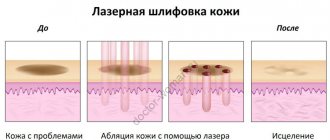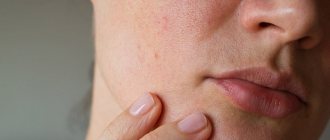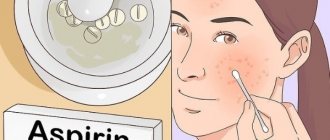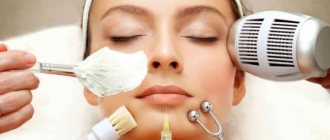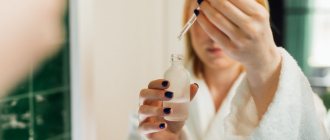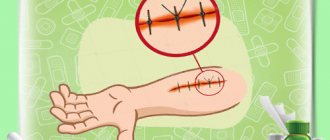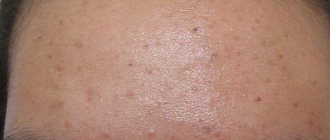A rash is a change in the appearance of the skin, its color, structure with localization of lesions on the face, scalp, arms, legs or, in severe cases, on the entire body.
The rash may be accompanied by itching, pain, the formation of red spots, bullae (blisters), papules (nodules), pustules (pustules), blisters, and plaques. The skin becomes dry, flaky, and when scratched, scratches, weeping, scabs or erosions may appear on the skin. Chronic itching and the addition of a secondary infection often provoke the development of foci of skin atrophy: changes in pigmentation, thinning or thickening of the skin.
The appearance of a rash may be accompanied by the following symptoms: itching, pain, fever, muscle and joint pain, headache, sleep disturbances, appetite, weight loss, general malaise, weakness, nausea and vomiting, inflammation and damage to the mucous membranes (eyes, cavities mouth, genitals).
The most common questions at a doctor’s appointment: allergic, infectious and acne rashes. It is important to understand that the cause of rashes is most often diseases - hair follicles and sebaceous glands, allergic reactions, infectious, autoimmune diseases. That is, the rash does not occur on its own, but is an external sign of pathological processes in the skin, internal organs and body systems.
Causes of acne
Acne on the face and body appears for various reasons.
Most often they arise as a result of the greatest activity of hormones: in adolescence, during a certain phase of the menstrual cycle, during pregnancy, in case of disruption of the endocrine system. They do not bypass even newborns and infants: hormones or a reaction to nutrition can affect this. Pimple is not a medical term. Experts, depending on the condition of the skin and inflammation, distinguish the following types of acne (acne):
- comedones - pimples in which a sebaceous plug has clogged the pore, are white or black;
- papule is an inflamed and painful full-blown pimple; bluishness and redness may appear at the site of inflammation;
- pustule - differs from a papule in the presence of purulent contents;
- nodular cystic acne - a severe form of pustules that penetrate deep into the dermis and are very painful;
- fulminant acne is the most severe form and requires medical intervention.
Severely advanced inflammation can cause bruising and redness. There may also be internal, subcutaneous acne. They are very painful. And in order to cure them, you need to make them ripen faster and break through to the surface of the skin.
When should you see a doctor if a rash occurs?
Often the rash does not require treatment and goes away on its own; in other cases, treatment consists of taking antihistamines and using topical medications that reduce itching and swelling, topical corticosteroids.
The rash may be a symptom of an underlying disease or indicate the development of an allergic reaction.
You should not engage in self-diagnosis or self-medication; to find out the cause of the rash, diagnosis and proper treatment, you must consult a doctor.
Rashes in infants are often not truly allergic. Read more about tactics for prickly heat, newborn acne, diaper dermatitis and other types of rashes in the material “Rashes in Babies.”
You should contact a pediatrician if air baths, prevention of overheating, frequent diaper changes, and the use of local remedies do not give a positive result, the rash does not go away within a few days; you notice signs of infection - increasing pain, swelling, redness of the skin, rashes accompanied by the release of pus, the formation of crusts, enlarged lymph nodes in the armpits, neck or groin; the child is lethargic, refuses to eat, and has a fever.
Get emergency medical help if the rash appears suddenly, spreads quickly throughout the body, is accompanied by severe itching, blistering, fever, swelling of the lips, eyelids, cheeks, hands, neck, vomiting, difficulty breathing, difficulty swallowing, or changes in skin color .
Prevention of acne and pimples
Prevention of acne and pimples includes proper balanced nutrition, diet, and regular skin care. During the period of greatest activity of the sebaceous glands (especially in adolescence and youth), exclude fatty foods rich in simple carbohydrates, sweets, and starchy foods from your diet. Alcohol and cigarette consumption also affect skin condition. Therefore, they should also be abandoned. In addition, do not forget about regular cleansing of your skin. Use antiseptic masks and creams.
Do not squeeze blackheads and pimples. By doing this, you can provoke even more of their appearance and the appearance of scars and scars.
These simple rules will help keep your skin pores clean and prevent dust and bacteria from getting into them, which contribute to the development of inflammation.
What to do if acne occurs?
To get rid of acne, you must first determine the true causes of the pathology. Before performing cosmetic procedures, experts advise visiting a dermatologist, endocrinologist, gastroenterologist and, of course, a gynecologist. Treatment of acne caused by gynecological or endocrine diseases includes eliminating the primary causes of the rash.
To help the body cope with acne faster, cosmetologists recommend reviewing your diet. Changing gastronomic habits (giving up sweets, flour, spicy, salty, etc.) can have a positive effect on the condition of the face.
Acne treatment
In fact, getting rid of pimples and blackheads (blackheads) is not very difficult. You just need to use drugs and products specially designed for this. These can be pharmaceutical drugs, cosmetics, as well as home recipes to combat this disease.
Pharmacy assistants
For mild cases of acne, it is recommended to use
- antiseptics,
- adsorbents, metabolic stabilizers,
- antibacterial drugs (antibiotics),
- hormonal drugs.
Antiseptics
Antiseptics cleanse the skin, disinfect, and prevent inflammatory processes in the upper layers of the epidermis. These include drugs such as “Metrogil gel”, “Streptotsid”, “Efezel”, ichthyol ointment, “Tsindol”, which are available in the form of ointments, anti-acne masks (diluted powder), suspensions.
Adsorbents
Adsorbents remove waste and toxins from the body (and the gastrointestinal tract), thereby promoting its cleansing. Available in the form of tablets for oral administration and powder. Good adsorbents are brewer's yeast, Polysorb, combined biologically active additives, Laktofiltrum.
Antibacterial drugs
Antibacterial drugs prevent inflammation from becoming infected. To combat acne, ointments and gels “Levomikol”, “Zinerit”, “Dancil T” are recommended.
Hormonal drugs
The hormones contained in hormonal preparations normalize and reduce the activity of the sebaceous glands. The most popular remedy for combating acne is hydrocortisone ointment and its analogues.
Facial skin diseases, main types
Human skin is capable of responding to any factors: both external (sun, wind, moisture) and internal (processes in the body).
The result of such reactions can be a variety of diseases that cause not only moral, but also physical discomfort. Therefore, at the first suspicion, and even more so symptoms of skin diseases, you should contact a specialist in order to avoid serious health problems and make your life comfortable. Being a kind of litmus test, our skin can react to anything: to changes in hormonal levels - acne, to long-term use of medications - rosacea, to sunbathing - rosacea, and so on.
Modern medicine identifies more than 600 skin problems, the vast majority of which are only the result of some factors, and only a small part of them are directly diseases of the epidermis.
The main diseases of the facial skin are:
- Anke - pimples and blackheads, the appearance of which is caused by disturbances in the functioning of the sebaceous glands;
- Rosacea is a small red or pink rash;
- Cuperosis - spider veins;
- Papillomas are neoplasms on the skin caused by a virus;
- Impetigo is an infectious purulent disease caused by streptococci and staphylococci (expressed in red tuberous rashes and spots);
- Keratosis - small spots covered with rough scales;
- Vitiligo - pink or milky-white spots with a round shape;
- Chloasma is increased skin pigmentation with clear boundaries;
- Seborrheic dermatitis is peeling of the skin in the nose and eyes, characterized by pain and itching.
Inexpensive but effective
However, you should not immediately resort to the strongest drugs. You can get by with easier means.
Clay
For example, cosmetic clay is excellent for ridding the skin of acne; it cleanses pores well and nourishes the skin.
Clay is an excellent natural adsorbent.
Blue and white clay are best suited for this purpose. It is enough to apply clay masks to your skin 2-3 times a week, and within a month you will see the results from their use.
Badyagi powder is an effective remedy in the fight against acne. Dilute it with water to a paste and apply it to your face for 15 minutes. Repeat once a week.
Hydrogen peroxide
Hydrogen peroxide is a great helper for cleansing the skin and treating acne. It disinfects the skin, draws dirt out of the pores, and prevents the development of bacteria in them that cause inflammation. Peroxide is effective for purulent acne. Before use, dilute a 3% hydrogen peroxide solution with boiled water in a 1:1 ratio. Wipe the skin with a cotton swab soaked in diluted peroxide. Or use it spot on.
Acetylsalicylic acid
Acetylsalicylic acid (aspirin) occupies an important place in cosmetology. Recently, aspirin skin peeling has become popular. Crush several aspirin tablets, dilute them with water to a paste, then apply the resulting mixture to your face. Rub your face lightly to remove dead skin cells. Such a cheap and simple remedy will help even out the skin and stop the inflammatory process.
Activated carbon
Activated carbon has proven itself to be an excellent adsorbent for skin. Masks made from it give visible results immediately after the first use. To prepare this miracle mask, dilute 1 tbsp in water. spoon of gelatin, then heat it. Add several tablets of crushed activated carbon to warm gelatin. Stir everything thoroughly. Then apply the warm paste to your face and leave until the mask dries completely. Similarly, you can use a mask made from gelatin alone.
After the gelatin mask dries, remove it along with any dirt.
Existing treatment methods
It would be correct to coordinate the treatment of inflammation on the face with a dermatologist, who will prescribe individually suitable and effective drugs based on a visual examination and clinical test data.
Among the medications most often prescribed
- a range of antibiotics in tablets: tetracycline, synthomycin, erythromycin, as well as ointments containing antibacterial and antiviral components for external use (sulfuric, ichthyolic, zinc, streptocidal);
- furatsilin solution for washes and lotions on the affected areas of the skin;
- brewer's yeast, which improves all processes in the epidermis, accelerates regeneration and regulates the production of sebum;
- activated carbon, which removes toxins from the body;
- multivitamin preparations that increase the protective functions of the skin.
Among the cosmetic procedures that can eliminate inflammation of the epidermis are:
- darsonvalization - cleansing the skin surface using local microcurrents;
- peeling procedures - prescribed for small foci of inflammation, devoid of suppuration;
- laser facial cleansing, which allows you to highly effectively renew and cleanse the epidermis from many inflammatory processes;
- mesotherapy – with the introduction of the desired therapeutic “cocktail”, which quickly eliminates inflammation, rejuvenates and tightens the contours of the face;
- cryotherapy - treatment of the skin surface with ultra-low temperatures, due to which local immunity is strengthened, and the regeneration (renewal) of skin cells is enhanced;
- ultrasonic facial cleansing – allowing you to quickly and most effectively get rid of any inflammatory reactions;
- ozone therapy – which has a comprehensive effect on eliminating foci of inflammation, acne, wrinkles and uneven skin color.
Homemade beauty recipes
Honey is famous for its healing and antiseptic properties. It perfectly tones the skin, makes it soft, velvety, and perfectly tightens pores. Honey can be used in its pure form, diluted with water and used as a tonic, or used to create cleansing and nourishing masks. After using the honey product, wash your skin and apply a nourishing cream.
Wipe oily skin and directly affected areas daily with a cotton pad soaked in lemon juice or strongly brewed green tea.
Walnut (its leaves) also helps reduce inflammation on the skin and thereby prevent further spread of comedones. To prepare the decoction, pour 2 tablespoons of walnut leaves (dry) into a glass of boiling water and boil for 5 minutes. Then cover the broth with a lid and leave to brew for another 25-30 minutes. After this, strain the broth and use it, rubbing it on problem skin several times a day.
Traditional medicine also helps in the treatment of marks and scars left after large acne. Melissa essential oil and blue volcanic clay cope well with this problem. Mix a few drops of oil with clay and dilute with water to form thick sour cream. Apply the paste on your face for half an hour, then rinse with warm water. The therapeutic effect of this mask is achieved due to the ability of lemon balm to relax the skin, heal wounds and tighten scars. Repeat the mask 1-2 times a week.
If your pores are large, a mixture of chamomile flowers and sage leaves will help tighten them. Take 1 teaspoon each of chamomile and sage, pour boiling water over them and let it brew for 20-30 minutes. Apply lotions to problem areas with this infusion.
Tips for caring for inflamed skin and lifestyle
You must remember that without regular and competent care, your skin will constantly be “capricious”, causing frequent inflammation, therefore:
- Avoid hot baths and washes, which can only aggravate the situation, increasing inflammation. To wash your face, always use soft water (boiled or filtered) at room temperature or herbal decoctions that effectively relieve hyperemia;
- Wean yourself from constantly touching the skin of your face with your hands, especially scratching and squeezing out acne, since these actions provoke the penetration of pathogenic bacteria under the skin, as well as pus, which can affect large areas of the skin;
- Normalize your diet and composition, trying to eat at the same time, avoiding carbohydrate, fried, smoked, spicy and fatty foods, as well as fast food. Give preference to raw vegetables, fruits, natural juices, mineral water, herbs, nuts and dried fruits;
- Avoid drinking cigarettes, alcoholic and sweet carbonated drinks, which are detrimental to skin health;
- Do not injure inflamed skin with scrubs, replacing them with hypoallergenic products for sensitive skin;
- Do not self-medicate for severe forms of inflammatory reactions associated with extensive purulent foci, boils and pustules, so as not to aggravate or worsen the condition of the facial skin;
- Strengthen your immune system, strengthen your body, exercise, take multivitamins at least 2 times a year;
- Do not neglect medical examinations, which help to promptly detect diseases of internal organs that can provoke all kinds of inflammation reactions on the skin surface;
- When using each new mask or cosmetic product for the first time, be sure to pre-test the skin in the area of the inner elbow to protect your face from possible allergic reactions;
- Clean your skin pores once a week using steam baths with herbal decoctions or adding essential oils to hot water, which help free the ducts from accumulated impurities, sebaceous plugs, relieve inflammation and have an antibacterial effect.
Acne on the face: causes and treatment
There are many reasons for the occurrence of acne: the use of cosmetics with comedogenic ingredients, stress, genetic predisposition, taking medications (for example, anabolic steroids), gastrointestinal pathologies, etc.31,49,80. When prescribing treatment, the dermatologist also takes into account why the rash appeared. In the treatment of mild to moderate acne, azelaic acid, for example, Azelik®5,9, can be used. The drug is used twice a day5. It is applied to clean, dry skin5.
*acne
